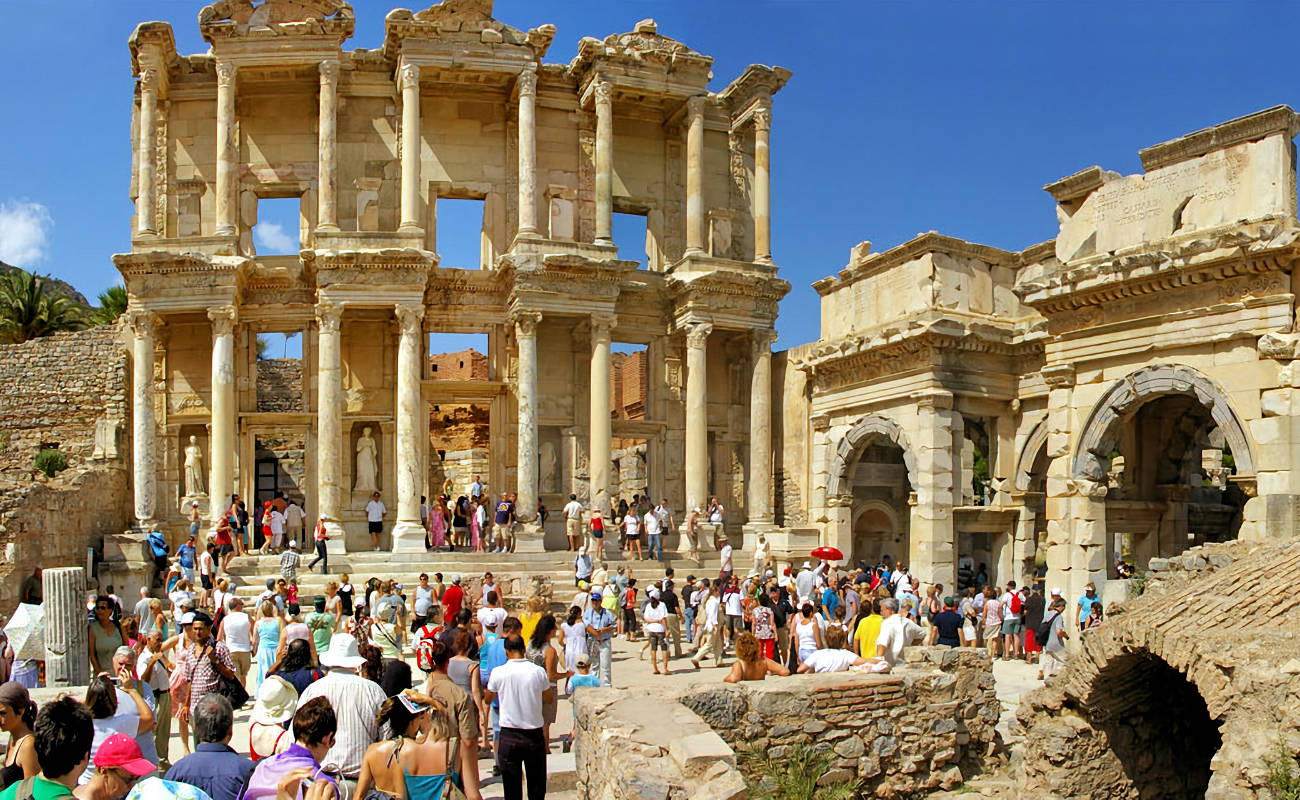
Ephesus Ancient Greek City
Ephesus ancient Greek city located on the western coast of modern-day Turkey. It was one of the most prominent and important cities in the ancient world, known for its rich history, remarkable architecture, and significant role in various cultures and civilizations.
Ephesus Ancient Greek City Early History
Ephesus is believed to have been founded around 3000 BC by the Ionian Greeks. It was initially established as an Aegean port settlement but later developed into a thriving city due to its strategic location for trade and its proximity to fertile agricultural land.
Ephesus Ancient Greek City Greek Period
In the 7th century BC, Ephesus became a member of the Ionian League, a confederation of Greek city-states in Asia Minor. It experienced periods of prosperity and cultural growth during this time. The city’s most famous landmark, the Temple of Artemis (Artemisium), one of the Seven Wonders of the Ancient World, was constructed in the 6th century BC.
Persian and Roman Rule
Ephesus came under Persian rule in the 6th century BC but was later captured by Alexander the Great in 334 BC. After Alexander‘s death, the city was ruled by various Hellenistic kingdoms until it came under Roman control in 129 BC.
Roman Period
Ephesus reached its zenith during the Roman era. It became the capital of the Roman province of Asia and a major trading and cultural center. The city’s population swelled, and it became famous for its impressive architecture and public buildings. The Library of Celsus, the Great Theater, and the Temple of Hadrian are some of the iconic structures built during this period.
Christian History
Ephesus is mentioned in the New Testament of the Bible, particularly in the letters of Saint Paul to the Ephesians. It was a significant center for early Christianity, and tradition holds that the Virgin Mary spent her later years in a house near Ephesus, which is now a popular pilgrimage site.
Decline
Ephesus began to decline in importance in the 3rd century AD due to a series of earthquakes and changes in trade routes. The city’s harbor silted up, making it less accessible to maritime trade.
Byzantine and Seljuk Periods
In the 4th century AD, Ephesus became part of the Byzantine Empire and continued to exist as a provincial capital. It was later conquered by the Seljuk Turks in the 11th century.
Abandonment
Ephesus was eventually abandoned in the 15th century AD, as the harbor continued to silt up, and the site was no longer viable as a major city.
Today, the ancient city of Ephesus is an important archaeological site and a UNESCO World Heritage Site. Visitors can explore its well-preserved ruins, including the Library of Celsus, the Great Theater, and various temples and residential areas, gaining insight into the city’s rich history and its significance in the ancient world.

